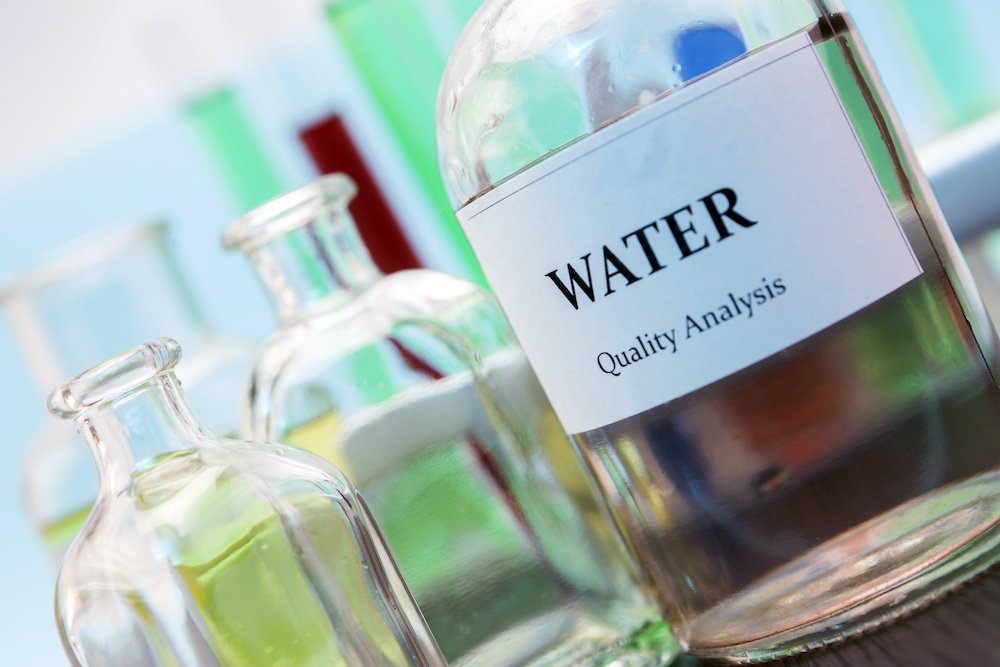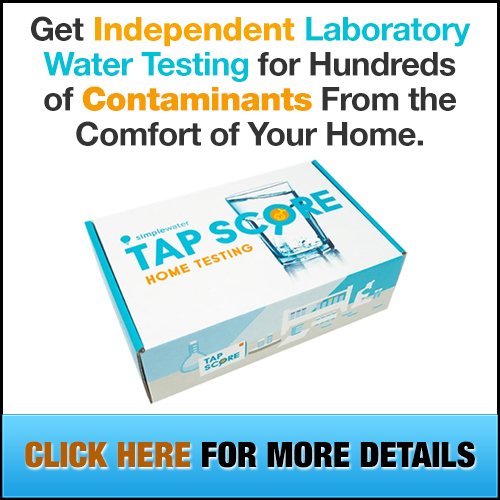Getting your well water tested is essential in assuring the health and safety of the people who intend to use it, regardless if they have the intention of drinking it or not.
After all, there are toxic substances that may be present in your water that can cause severe allergic reactions even without ingesting it.
The question is how to get well water tested.
Fortunately, there are numerous water testing facilities, like Simple Water, that can assist you in doing so.
Table of Contents
Well Water Testing Methods
While there are numerous types of water tests, these can all be done through two main methods: test kit use and well inspection.
Water Testing Kits
This method of water testing involves the use of a kit that can include storage units for water samples and diagnostic materials.
There are two common types of water testing kits, and both of them can be used by the well owner himself.
The first type is the strip test kit. It requires you to obtain a sample, which you then dip a special strip into. The strip will change its color according to the contaminants present in the water.
This kit is not very accurate, but it is enough to give you a quick reading. It is also more affordable.
The second type is the send-away test kit. It requires you to obtain a sample that you will then need to send away or send back to the laboratory or testing facility indicated in the kit.
The lab will send you back a detailed report of the results once it’s done.
There are other water testing kits out there, including those that require you to add certain components to the sample water and let it sit for a certain period (usually 48 hours).
You would then have to wait and see if the liquid changes color. Then, there are meters that you can install directly to your water source for real-time readings.
Well Inspection
Well inspection is the method of testing where the specialists visit the site in person with their equipment in tow.
It sometimes involves the use of an underwater camera in order to get a more accurate diagnosis.
This is great for people who want to determine the root cause of proven contamination.
While testing the water can reveal the presence of microorganisms, it is only with an underwater camera that you may be able to find out that these elements are coming from, say, a den of rats.
Different Types of Water Tests
As mentioned, there are different types of water tests, as well. Below are the most common ones:
Bacterial Testing
This seeks to determine the range of bacterial contaminants in your water.
E. coli is the most common. It comes from fecal matter that can seep into your groundwater from a nearby septic tank or livestock farm.
The presence of this bacteria is problematic and can cause several health issues, especially after ingestion for an extended period.
Mineral Testing
Bacterial contaminants are not the only elements that can contaminate your water.
Minerals can also find their way to your well as the water slides through various underground rocks.
While some minerals can be healthy for the body, that doesn’t mean that we should ingest them in large amounts.
Well water with mineral buildup must be purified to make it safe for drinking.
pH Testing
This test seeks to determine the acidity of your well water. Not only can too much acidity affect the taste of your water, but it can also make people sick.
There are certainly other tests that you can apply to your water to determine its quality and potability. In fact, most tests are formulated to combine the tests mentioned above and more.
More extensive tests can be applied by the facility according to your needs, such as what Simple Water does to its clients.
Simple Water
Simple Water is a water testing company based in Berkeley, California.
As one of the pioneers in residential water testing, Simple Water, through its Tap Score Water Testing service, has already provided millions of homes and businesses with state-of-the-art water testing and remediation services.
They have three tests related to well water testing alone. These are Essential, Advanced, and Extended. All three are formulated for private and shared well installations.
The Essential Water Test includes general chemistry, hardness and alkalinity, toxic and heavy metals, nitrate and nitrite, coliform and E. coli, and silica.
The Advanced Water Test includes those in the previous test, along with industrial chemicals, disinfection byproducts, and oil and gas indicators.
Lastly, the Extended Water Test includes those in previous tests, along with radioactive particles, flame retardants, pesticides, and plasticizers.
Their service team is ready to receive any queries in case you’re unsure which option is most suitable for your situation.
How to Get Well Water Tested
Before this quick guide, keep in mind that we’re referring to send-away kits and not other types of DIY testing methods.
Step 1: Limit Cross-Contamination
The first thing that you want to do is to wash your hands thoroughly after opening the package.
Don’t touch the testing implements with dirty hands, as doing so may yield inaccurate results. Avoid placing them on dirty surfaces, too.
You may need to wear a protective face mask if you’re not feeling too well to prevent coughing or sneezing and getting infected respiratory droplets into the testing implements.
Step 2: Read the Manual
Your testing kit should come with an instruction manual.
Read it thoroughly to ensure that you follow the method prescribed by the testing facility.
They may also require you to fill out some forms, including a sticker that you must later use to label the sample container.
Step 3: Remove Any Filtering Systems
You seek to test the quality of your well water in its most basic form, so remove any filters you have previously installed before getting a sample.
Step 4: Obtain the Samples
We recommend getting two separate samples.
The first one should come from your tap.
To do this, let your faucet run for three to five minutes before getting the sample. This ensures there aren’t any sediments at the end of your tap that might compromise the test results.
As for the second sample, obtain water directly from your well.
Testing both water sources will help you determine where the potential contamination happens.
Does it come directly from the source, or is the clean water being contaminated as it makes its way to your home?
Step 5: Send the Samples Back to the Testing Facility
Once you have the samples ready, send it to the testing lab immediately. The longer it takes for the samples to be tested, the less accurate results you’ll get.
Ideally, your chosen facility will already cover the shipping fees, like what Simple Water does.
Step 5: Get the Results
It might take a few days for you to receive the results. While waiting, please refrain from using your well water, especially if you suspect potential health risks.

How to Read Results
The format of the test results you’ll receive will vary according to your chosen testing facility. Most of them will mention a score and a quick interpretation of what those numbers mean.
It will also contain the particular contaminants found in your sample, along with their levels or percentage.
Depending on how detailed the results are, it may also include the possible sources of the contaminant and its potential health risks.
The general properties of your water will also be recorded, such as the color, odor, hardness, pH levels, and alkalinity.
Finally, you can expect suggestions on how to possibly remediate the contaminants to make your well water potable.
How to Make Well Water Potable
First of all, keep in mind that there is no all-in-one solution when it comes to clearing your well water safe for drinking.
Each treatment seeks to clear the water of a particular contaminant. Depending on the elements that you want to remove, it might take a combination of filtration and purification methods.
The Centers for Disease Control and Prevention recommends the following methods:
Filtration
This method uses a tool in the form of a physical barrier or chemical component that can remove impurities from the water.
Distillation
This method involves boiling contaminated water and then collecting the steam in a separate container.
This process kills microorganisms in the process and leaves any physical and solid particles behind.
Disinfection
This method involves eliminating active components through a physical or chemical process.
Chemical substances that can be used for disinfection are chlorine and ozone, while physical processes include the use of UV light and electric radiation.
Conclusion
Those who are trying to figure out how to get well water tested will be pleasantly surprised that there are water testing facilities offering such services.
These services include an actual inspection of the well or the use of a home testing kit.
There are various water testing kits available, such as test strips, meters, and send-away kits like those offered by Simple Water.
We recommend send-away kits, though, mainly for its accuracy and detailed results.
You can then choose from a variety of water treatment methods to rid your well water of the proven contaminants present.
There are times when multiple water treatment methods are required to clear well water.
The results, though, are worth it for your family’s health and safety, as well as your own peace of mind.
